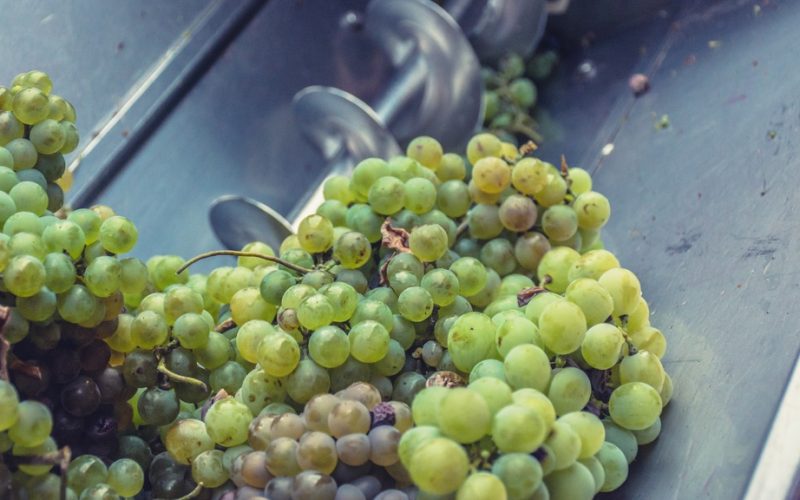From wine tanks and bottling machines, to oak barrels and destemmers: starting a winery requires a lot of material and care. We have compiled a list with information about the most essential equipment you will need for your small winery.
Starting any business is hard work, and a winery is no different: the initial investment is usually steep and buying the tools to begin production is only the tip of the iceberg. However, if you are just considering it or you have recently purchased a winery, we have put together a list to help you understand which materials are the most essential at the beginning of your journey.
Winemaking, Fermentation and Storage
How you treat the grapes is crucial in winemaking: it needs to ripen healthily, it should be squeezed correctly and it requires a specific fermentation time. You can control many of the factors that will determine whether your wine is high-quality or not, and this control stems from the tools you use during production.
1. Crusher-destemmers
Three main types of machine could be included in this section:
- Crusher-destemmers
- Destemmer-crushers
- Destemmer-only
At least one of them is necessary in a winery, since they are the devices that separate the grapes from the stems. Depending on the volume of fruit to be processed, you may benefit more from a manual or a motorised model.
The difference between crusher-destemmers and destemmer-crushers is the order in which each action takes place: the first crushes the grapes before separating them from the stem, and the second separates before crushing.
Crusher-destemmers are cheaper, and used more often in smaller wineries, although they can be less efficient than destemmer-crushers. They may also leak some undesirable flavours from the stems into the juice. Favouring one type of machine over the other should depend on the maximum amount of fruit you want to process in one day.
2. Wine Press
One of the most fundamental procedures in winemaking is pressing the grapes. Even though there is an old tradition of stomping in Spain, presses are probably the most effective way to squeeze the juice from the fruit.
There are several types of wine presses, but they all function in a similar way, exerting controlled pressure over the grapes to extract the juice. This control is paramount during the pressing process so as not to crush the seeds and thus introducing unwanted tannins into the wine. If you are not expecting large quantities of grapes, you could consider purchasing a basket or a bladder press: they are both on the smaller side, but perfect for starting a winery.
3. Wine Tanks
Wine tanks are large acid-resistant containers that can be made of wood, concrete or stainless steel. Since their size and shape can vary to suit your requirements, they are usually a practical solution if you need to make optimal use of your space. There are tanks with different purposes, but generally, we can sort them into two groups, those that store the mash, and the ones that are used for fermentation. Depending on their purpose, tanks can have various capacities; a small winery would require several containers ranging from 1,000 to 3,000 litres.
Most of these devices are highly technological, and should have at least one of the following features:
- Pressure regulators
- Cooling/heating systems
- Insulation
- Agitator
- Mash plunger
4. Must and Wine Pumps
Wineries have pumps in order to transfer wine and its by-products in or out of the different containers. Must pumps are stronger and can handle moving thicker substances; they mainly pump wine during the fermentation process.
The wine pump is a little less powerful and is used to move the resulting wine after fermentation, usually for filtration and bottling.
5. Safety Equipment
When using all the previous devices, as well as any others you may add to your winery, safety is paramount. Workers should always be within reach of an oxygen mask to avoid CO2 poisoning and wear harnesses when operating the tanks.
Ageing Your Wine in Barrels
Once the wine is ready, you have two options, bottling it right away or ageing it. If you are interested in the second option, you might want to consider using:
a) Oak barrels
There is a difference of opinion when it comes to which wood is better, American or French oak. In any case, they both add a certain tang to the wine, although the longer you use a barrel, the less flavour it can transfer, which is why they are only used for approximately two or three years.
b) Stainless steel drums
Another option is using stainless steel drums: they are more durable, they can be reused often and since they are not porous like barrels, you can control the wine’s exposure to air, which affects the resulting flavour. They are also easier to clean due to their smooth surface, and afterwards there are no remnants of the previous wine stored there.
Lab Equipment
In order to ensure the high quality of the final product, it is essential to monitor the product closely throughout the entire process. For this purpose, you can either have your own oenology laboratory or send samples to an external lab; the latter is typically a better option for a small facility. In any case, keeping a close watch on your wine should always be a top priority.
If you are interested in investing in a small winery, feel free to contact us at Rimontgó to ask for any information you need regarding winemaking. We will be more than happy to offer you our advice!
